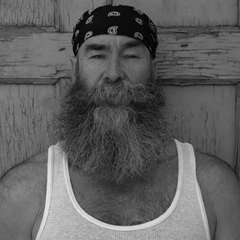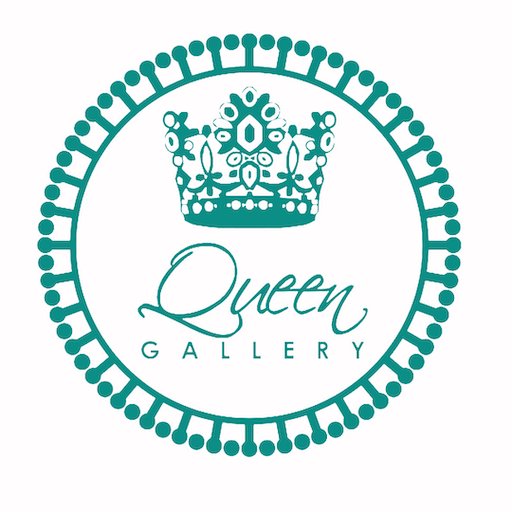For purchase inquiries please send your request to the following e-mail address.inquiries@queengallery.ca
-

-

Elation
-

Elation
-

Elation
-

Elation
-

Yael and Sisera
-

Zipporah
-

Entartete kunst
-

Entartete kunst
-

Proverb
-

Entartete kunst
Statement on Behalf of the Artist
Wolfman’s work, while exploring biblical themes, also examines the visual pleasures of the nude male body. “Male nudes were always represented and, if you look at the works of people like Michelangelo, Caravaggio or Il Sodoma, they depicted religious figures as homoerotic,” noted Wolfman. “So why can’t a Jewish artist glorify the male body in religious art? Judaism has always had a tantric component, even if it hasn’t been widely discussed.” Wolfman worked from the beginning with a digital camera and exhibited mostly colour images whose large scale accentuated the references of many of his compositions to seventeenth-century mannerist narrative and genre painting.
Wolfman’s first solo exhibition, mounted in 2010, was entitled “Midrash,” after one of the four levels of Jewish textual analysis of the Bible. The interpretive technique fills in the gaps of narratives, explains contradictions, compares and contrasts a story with other biblical episodes to uncover–and sometimes, arguably, to generate–deeper, hidden meanings. Wolfman’s work in “Midrash” thus offered a queer trope on a well-established and venerable pattern of exegesis. “Not only do I look for the same-sex narratives in the Torah, but also the alternatives to normative sexuality, such as transsexuality, polyamory, bisexuality, interracial and interreligious relationships,” explained Wolfman.Inspired by stories and practices from the Torah, Wolfman’s “Midrash” recontextualized ancient visions of devotion to address his own reality. The photographs are at once erotic and spiritual–classically gay on the immediate level, and at the same time deeply orthodox on the liturgical. In one suite of four images, a tallit is worn by a man dancing nude, an aging go-go guy in dervish whirl. In “Korban,” Wolfman himself, as the patriarch Abraham in a business suit, raises his knife over a nude Isaac, prone on an altar set up in the atrium of one of Toronto’s signature monuments to late twentieth-century capitalist development. A tefillin is reimagined as a glossy red ribbon. Wolfman saw the male body in middle age as erotic – and far more textured, more storied, than the male body in its alleged prime.
Wolfman’s theatrically staged “queerings” of biblical iconography parallel, and further enhance, the long tradition of Canadian queer appropriation – a tradition that includes works by General Idea, Shawna Dempsey, Lorri Millan, Ho Tam, Kent Monkman, and others.
“For Jews, sex is good, and the body is good. If we are made in God’s image, then how can we be ashamed of our bodies?” said Wolfman of the potentially controversial nature of his photos. ”It is pointless to be intimidated by what Orthodox Jews (or any religious fundamentalist) would say about my nudes, since, technically, one isn’t supposed to depict any creature created by God. Once I depict people, what difference does it make what they are wearing? Besides, religious fundamentalists don’t go to art galleries.”
“I like the way light reflects off muscles, and how it gets absorbed in mats of body hair,” said Wolfman of his erotic fascinations. “What I find most interesting is how people’s faces and their body language change once they are naked. I get a more honest expression from my models, and the rawness of that honesty is what most appeals to me about photographing people nude.”
“I’m on gay cruising sites every morning,” said Wolfman. “The advantage of the sites I use is that men show photos of themselves nude, so I can determine if they will be suitable. For the same reason, the other main place I find models is at the gym, where locker rooms and showers become audition venues. There are always a lot of muscular older men with long white beards in biblical tales, so if anyone reading this looks like an Old Testament prophet, contact me.
Contemporary with “Midrash” was a moment of notable controversy around Pride Toronto, centering on issues of censorship and religious tensions. Wolfman weighed in on that debate.
“When I started going to Pride events in the ’70s, it was about queers standing up against homophobia. Lately, the Pride events are about queers attacking each other,” said Wolfman. “Imagine all those homophobes we used to protest against sitting back and smiling. They don’t need to bash us because we’re too busy doing it to ourselves. That isn’t something to be proud about.
“One of the things I like about Judaism is that it dissects issues and makes truth relative. Take the old cliché about asking two Jews one question and getting three answers, for example. I find it sad that a community that speaks of the fluidity of genders and sexualities, hybrid natures and challenging dichotomies, should be so polemic about the issues around Pride.”
“The practice of midrash is about interpretation and, from studying it, I’ve learned that things are rarely right or wrong, and that issues require study, not emotional reactions. I don’t see things as black and white. Except some photos.”
Artist Biography
The late Oscar Wolfman (1956-2011) came to photography after careers as a dancer and choreographer and, later, as a teacher in high schools (English) and universities (Sociology). He was born to Adolf (Dolek) and Irene Wolfman, both Holocaust survivors who landed in Montreal with Oscar’s sister, Paula, in 1948. He recalled “inherited, second-generation memories” about the concentration camps, and other losses, which influenced his photography. In young adulthood, Oscar came out as a gay man, connecting the oppression experienced by Jewish people and those in GLBTQ communities, he said.
As a teenager, he had become interested in dance. He choreographed for the Dora Wasserman Yiddish Theatre in Montreal and led a folk-dance troupe.
His graduate work on homophobia and gay and lesbian Jewish identity construction merged with his love of the arts, and he sought to find direct, non-academic ways to illustrate the connections of Otherness and Queer Theory, homophobia and anti-Semitism; he decided on photography as the most immediate genre.
His interest in Jewish hermeneutics joined with his knowledge of queer culture and camp, movement and lighting design from his theatre experience, and a background in the study of European art history to meld into the techniques and subject matter of his photography. His career path parallels more than one other autodidact queer photographer of note. The work of Robert Giard comes to mind: Giard began as a high school English teacher and went on to photograph more than 600 lesbian and gay writers, beginning in the 1980’s and continuing till his sudden death in 2000.
“A large part of my work addresses the appropriation of Jewish biblical narratives in 2,000 years of Christian art,” said Wolfman of his first solo exhibition in 2010. “It is too Jewish for most queers, and too queer for most Jews. It is serious in its commentaries and symbolism, but done with intentional artifice and camp.”
Wolfman raced to mount his second solo exhibition in the face of his immanent death in 2011. Its title, “Entartete Kunst,” was the name given by the Nazis to all modern art that was critical of their politics, abstract, or produced by Jewish and/or gay artists. Ironically, by presenting exhibitions of this art, they exposed it to many people who would have never seen or thought about it.
“Many artists choose not to name their work, in which case ‘untitled’ (with a number denoting its chronology in the artist’s oeuvre) becomes the title,” wrote Wolfman of this show. “I have chosen to use ‘Entartete Kunst’ in its place: to acknowledge that my work, for several reasons, would be considered degenerate. I am reclaiming the term ‘degenerate’ as an art style that has an ethnic and sexual base.
“In doing so, I hope to show that, just as the Nazi exhibitions of degenerate art generated an art form that, previously, did not exist, Jewish art as degenerate is belied by generations of Jewish artists that continue to live while the Nazis died as a force of power and domination more than 60 years ago. Art by sexual ‘minorities’ continues even without the need of [self-] procreation. While only a few of the pieces in this show have the title of ‘Entartete Kunst,’ all the pieces are, in fact, de/Generative.”
Wolfman died on November 21, 2011, several weeks after the closing of the show. The Globe and Mail’s R.M. Vaughan described Wolfman’s work as “a considered yet fearlessly transgressive practice, [which]was just beginning to become better known. … The man will be missed, his art must not be.”

